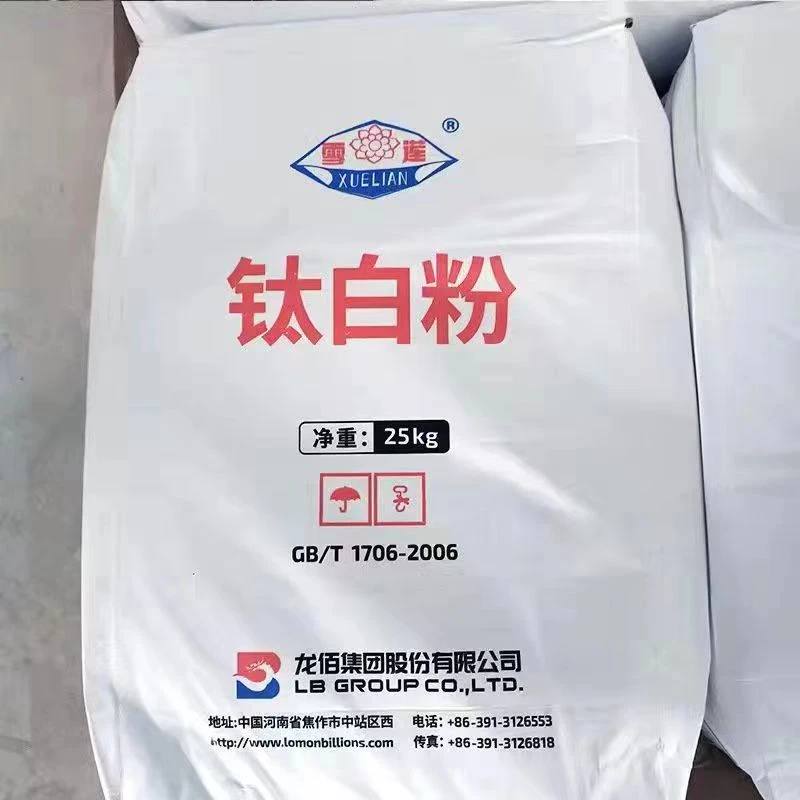
12 月 . 06, 2024 19:18 Back to list
titanium oxide tio2 factory
The Titanium Oxide (TiO2) Factory A Key Player in Modern Industry
Titanium oxide, commonly referred to by its chemical formula TiO2, is a versatile compound that plays a critical role in various industries. The production of TiO2 through specialized factories has garnered significant attention in recent years due to its extensive applications and importance in enhancing product quality. This article delves into the process of manufacturing titanium oxide, its various uses, and the implications for industries and the environment.
Production Process of Titanium Oxide
The manufacturing of TiO2 typically involves two primary methods the sulfate process and the chloride process. The sulfate process is a traditional method that begins with the mining of titanium ore, such as ilmenite or rutile. The ore is then treated with sulfuric acid, resulting in a sulfate solution that is further processed to extract titanium dioxide. This method, while effective, generates a considerable amount of waste and environmental impact.
Conversely, the chloride process has gained popularity due to its more environmentally friendly approach. In this method, titanium ore is reacted with chlorine gas at high temperatures to produce titanium tetrachloride (TiCl4). This intermediate product is then oxidized to yield TiO2. The chloride process is known for producing high-purity TiO2 with fewer impurities, making it the preferred choice for industries requiring high-grade materials.
Applications of Titanium Oxide
TiO2 is renowned for its exceptional properties, including high refractive index, excellent UV resistance, and strong opacity. These qualities make it a crucial ingredient in a wide range of applications. One of its most prominent uses is as a white pigment in paints, coatings, and plastics. The brilliant whiteness and opacity of TiO2 provide a durable and vibrant finish, making it a staple in the paint and coatings industry.
In addition to its role as a pigment, titanium oxide is also utilized in the production of sunscreens. Its ability to absorb UV light makes it an effective ingredient for protecting skin from harmful UV rays. The use of TiO2 in sunscreens is especially favored by consumers seeking physical protection, as it is often deemed safer and less irritating than chemical sunscreens.
titanium oxide tio2 factory

Moreover, TiO2 has found application in the field of photocatalysis. When exposed to UV light, TiO2 can facilitate chemical reactions that break down organic pollutants, making it an effective agent for environmental remediation. This has led to its use in air and water purification systems, where it helps in the degradation of harmful substances, contributing to cleaner, safer environments.
Environmental Considerations
While the production and use of titanium oxide present many benefits, it is essential to consider the environmental implications associated with its manufacturing processes. The sulfate process, in particular, often raises concerns due to the generation of waste byproducts and acids that can impact local ecosystems if not managed properly.
On the other hand, the chloride process, despite being more efficient and cleaner, is still energy-intensive and requires careful handling of chlorine gas, a hazardous compound. As such, TiO2 manufacturers are increasingly focusing on adopting sustainable practices and exploring alternative raw materials to minimize their environmental footprint. This includes the recycling of process waste and investing in renewable energy sources for production.
Conclusion
The titanium oxide factory stands at the intersection of industrial innovation and environmental responsibility. With its wide-ranging applications, TiO2 is a critical component in many everyday products, from paints and plastics to sunscreens and environmental technologies.
As industries continue to evolve and place greater emphasis on sustainability, the production of titanium oxide will need to adapt. The ongoing development of cleaner manufacturing processes and the exploration of new applications highlight the dynamic nature of this compound in modern industry. As consumers become increasingly aware of environmental impacts, the demand for responsibly produced TiO2 will likely rise, pushing manufacturers toward greener practices and ensuring a sustainable future for this essential material. By balancing industrial growth and environmental stewardship, titanium oxide factories can continue to be pivotal players in both economic development and ecological preservation.
-
Lithopone for Plastic & TiO2 R-5568/SK-6658 Masterbatch Solutions
NewsMay.30,2025
-
China Leading Rutile TiO2 Manufacturer - R5566 & R996 Grades Available
NewsMay.30,2025
-
High-Purity Anatase & Rutile TiO2 Powder Trusted Manufacturer
NewsMay.30,2025
-
High-Purity Anatase Products Trusted Supplier & Manufacturer
NewsMay.29,2025
-
Best Price Eco-Friendly Rutile TiO2 Supplier & Wholesale Factory
NewsMay.29,2025
-
Chinese Anatase Titanium Dioxide for Ceramic Glaze Reliable Supplier
NewsMay.29,2025
